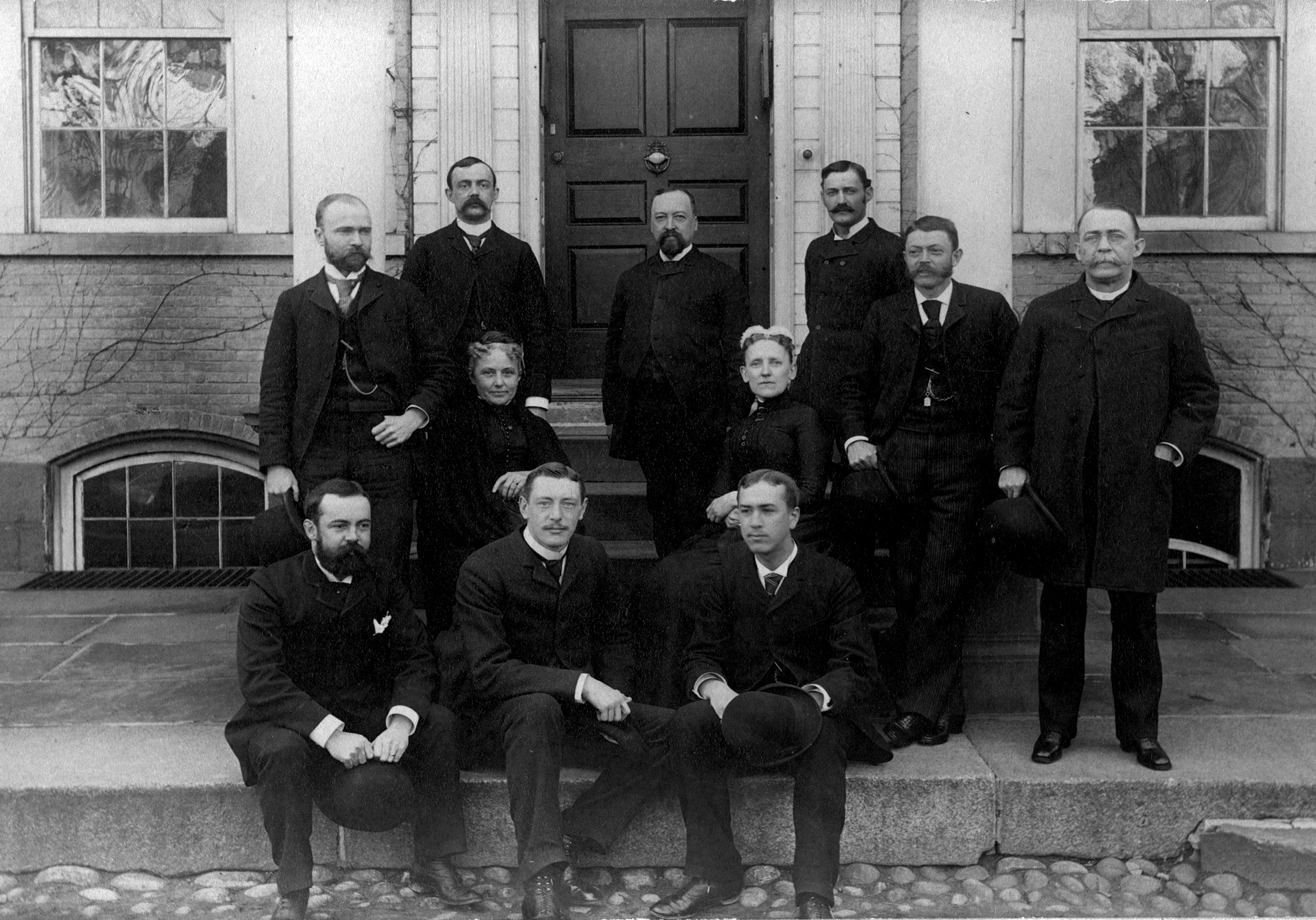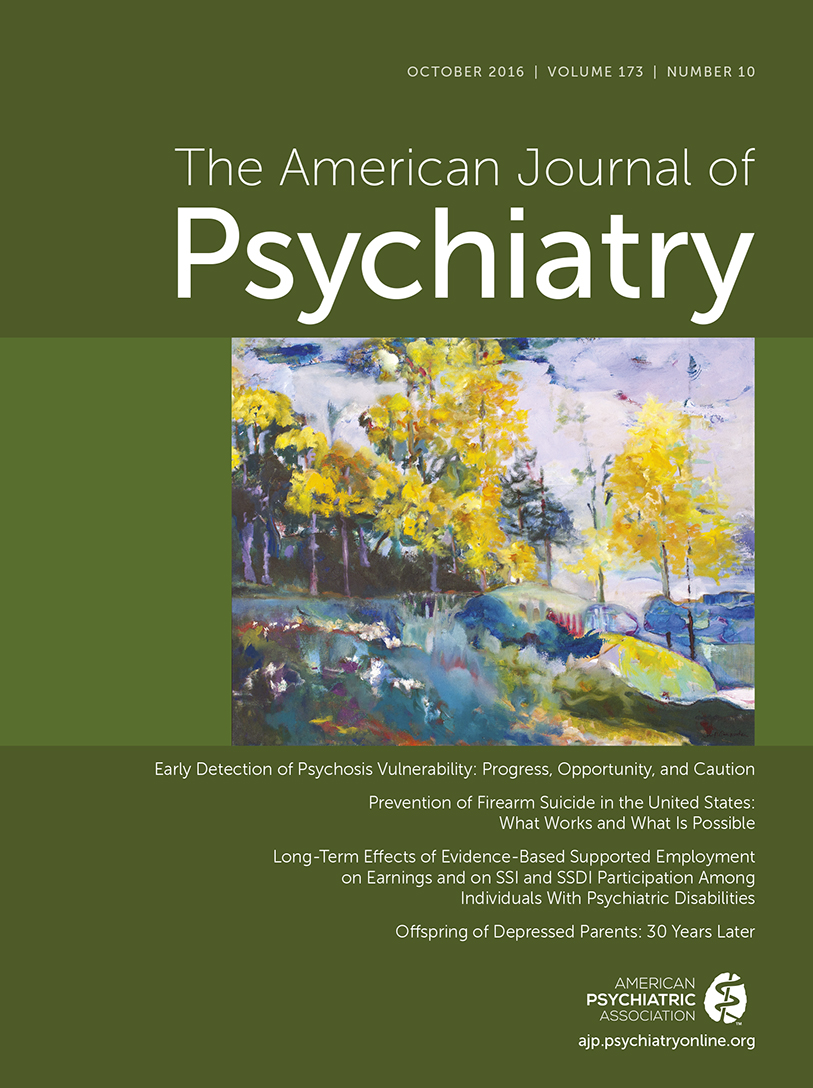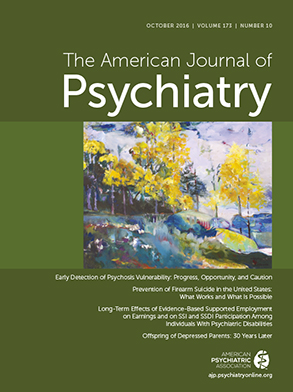From 1879 until his retirement from the McLean Hospital in Massachusetts in 1903, Edward Cowles almost single-handedly guided the professional transformation of the community of American alienists, or asylum physicians, from a marginal sect to a respected biomedical specialty in U.S. general medicine. Influenced by the rise of scientific medicine and its laboratory revolution, Cowles used his long tenure as superintendent of McLean and (in 1895–1896) his prominence as president of the American Medico-Psychological Association (or AMPA, the prior name of the American Psychiatric Association) to introduce changes that would bear fruit in the 20th century. His goal was to emulate the scientific values and laboratory practices of European, particularly German, psychiatry. Indeed, he was the first in the United States to insist on using the term “psychiatry” for what was then more commonly referred to as “alienism” or “asylum medicine” (
1,
2). But in the 1890s “psychiatry” sounded too German for most American alienists, and it was not until after 1917 that it caught on in the United States (
3).
Cowles should be remembered for many other firsts. In 1888 he established the first laboratory in the country devoted to basic and clinical psychiatric research. Biological psychiatry in America truly began at McLean with Cowles (
4). When McLean moved to a newly built facility in 1895, its new laboratory attracted worldwide attention, inviting comparisons to Kraepelin’s dual-purpose clinical and research clinic in Heidelberg (
5–
7). Biochemical, neuropathological, and experimental (physiological) psychology research was conducted with the purpose of understanding the prodromal or prepsychotic vulnerability stage of illness (nervous exhaustion, the most severe form of neurasthenia), which Cowles believed, if reversed or halted, could prevent its evolution into the “unitary psychosis” stages of true insanity (melancholia, mania, and terminal dementia) (
8,
9). Prevention was his explicit argument for convincing Massachusetts government officials to provide funding for this work (
10). By doing so, Cowles framed the trajectory of American psychiatry in the next century, which diverged from European traditions by emphasizing mental hygiene, individual case studies of the premorbid lives of patients (not European-style descriptive psychopathology or longitudinal studies of already ill patients), and progressive promises of prevention.
In 1889 Cowles was the first to institute the practice of weekly staff diagnostic “case conferences” or “clinics” and an evening “psychological seminary,” which he borrowed from his observation of German medical practices (
11). Beginning in 1897, these McLean case conferences were the first in the country to explore the usefulness of Kraepelin’s new nosology and disease concepts as diagnostic tools. Cowles, however, was skeptical of Kraepelin’s claims of new natural disease entities, and he remained firm in his belief that there was only one disease (insanity), which had multiple forms. Nonetheless, Cowles used his considerable influence to bring German psychiatry to the United States by facilitating the introduction of two highly trained Swiss neurologists into prominent positions in U.S. psychiatric institutions: August Hoch, who directed research at McLean starting in 1894, and Adolf Meyer, whom Cowles recommended for a position at the Worcester Lunatic Hospital in 1895. When E.E. Southard, director of the Boston Psychopathic Hospital, reflected on the history of psychiatry in the United States in his presidential address to the AMPA in 1919, he acknowledged Cowles, not Meyer, as the most prominent figure since 1894, because he introduced a “laboratory turn of mind” into the profession (
12).
Cowles had been a surgeon and director of a hospital in the Union Army during the Civil War, a physician and superintendent at the Boston City Hospital from 1872 to 1879, and superintendent at McLean from 1879 onward. In 1882 he created the first professional training program for nurses for the care of the insane, a model program followed by dozens of other asylums and state hospitals (
13). According to his closest friend, psychologist G. Stanley Hall, “In his later years Dr. Cowles followed with intense interest the rise and decline of Kraepelin’s views, with which his sympathy was limited. He was also interested in psychoanalysis, though not convinced of the extreme views of Freud” (
14). To our knowledge, Hall’s obituary of Cowles, now almost a century old, was the last time an article in a major scientific or medical journal was devoted to the life and work of this pivotal but neglected figure in American psychiatry. Arguably one of the most influential figures in the modern history of American psychiatry is also its most forgotten.


